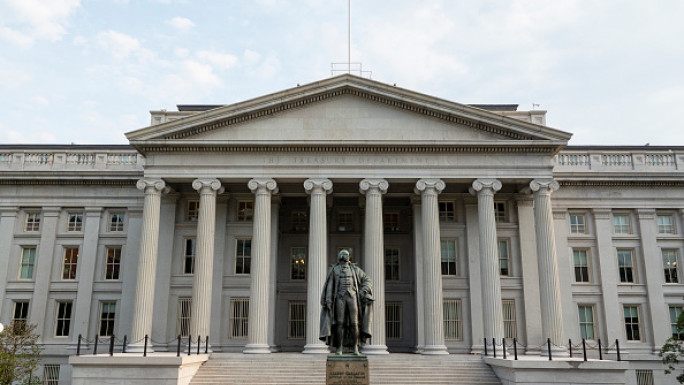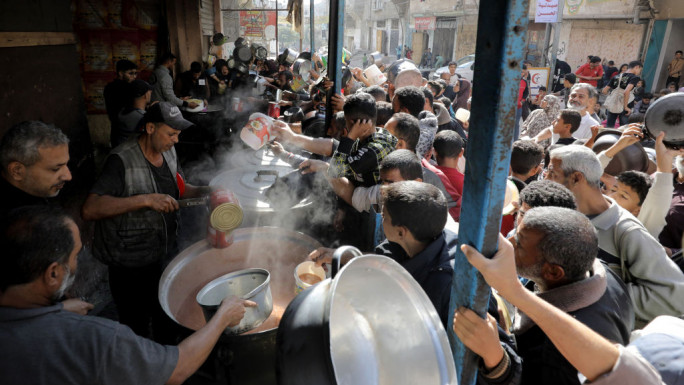
Between 'Clash' the movie, and 'Tahrir' the reality
Even before Tom Hanks gave it the Hollywood "bump" by urging everyone to see it, the Egyptian feature film, "Clash", was being touted as one of the must-see films of the year.
Director and co-writer, Mohamed Diab, wrote the plot against the backdrop of discord in 2013, when popular protests against then President Mohamed Morsi were followed by his toppling at the hands of the military, and a subsequent cycle of extreme violence - mostly between Muslim Brotherhood supporters and the police/military - claimed over 1,000 (mostly civilian) lives.
Diab's film is set almost entirely in a police van used to transport prisoners. It immediately brings to mind horror stories of death and torture in these extremely poorly ventilated large metal boxes.
Since 2011, and when approaching any anti-government protest, one would wonder if they would be leaving in one of those. The idea of the van, became associated for many, with protests, civil unrest, revolutionary and police brutality.
The setting of the plot, coupled with Diab's undeniable support of the 25 January protests, led many to believe the movie would somehow attempt to represent a revolutionary/anti-regime perspective, which was not in fact the case.
Diab himself had never made such claims, instead stating that the film was not revolutionary, but meant to reflect the state chaos (he used the word "hysteria") at the time.
He does this by using one of the most reliable (and slightly overused) tropes in cinematic history, where a motley crew of characters are stuck in one location, and are forced to navigate through a difficult situation, despite (or inspired by) their differences. In this case, the characters are prisoners in the van.
 |
As we are still experiencing the aftermath of the 25 January Revolution, this trope itself triggers a memory, just as strong as the police van, of the revolution |  |
Perhaps this is a good time to say that I have yet to see the film, and do not intend to review it here, but that it is apparently very well made. Nor do I wish to discuss the apparent controversy it caused over whether or not it is revolutionary or critical enough. As far as I'm concerned, the film makers didn't set out exclusively to do either of those things, so it doesn't matter. Also, let's be real: Had it been so, it would never have been produced or shown in Egypt under the current climate.
It is specifically the trope mentioned above that gave me pause for thought. There is a tendency in Egyptian film and theatre to use and abuse this device. Putting pieces that seemingly don't mix together and forcing them to interact, is a simple and straightforward way of creating the kind of compelling plot line that attracts an audience.
It involves the very real possibility of a relatable conflict - as it is designed to allow most audience members to be able to identify with at least one character. This engages audience and makes them feel intellectually involved in searching for the plot's resolution towards a greater goal. It is worth remembering these plots require the characters involved in a sticky situation to get out of it together.
However, as we are still experiencing the aftermath of the 25 January Revolution, this trope itself triggers a memory, just as strong as the police van, of the revolution, perhaps adding to the immediate assumption that the film does have revolutionary tendencies or at least inspirations.
Many forget that one of the most of the most enduring elements of the 18 days that preceded the ousting of Mubarak was the unusual situation that thousands of Egyptians found themselves in: Trapped in the relatively confined Tahrir Square, unwilling and at times unable to leave until the goal of removing Mubarak was achieved, different kinds of individuals who under normal circumstances never interact were negotiating a way to co-exist on a daily basis.
The movement manifested itself in many different, sometimes hard-to-believe ways. In what used to be the central grassy area of the square, tents filled with people of very different ideologies, were set-up next to each other. Nightfall saw the eager campers, unable to sleep, sit-down in discussion circles.
 |
I remember vividly these circles including Islamists, leftists, liberals, rich, poor, old and young women and men, all discussing their stand-off with the government |  |
I remember vividly these circles including Islamists, leftists, liberals, rich, poor, old and young women and men, all discussing their stand-off with the government, how to maintain the square (health and safety, supplies and even entertainment) and what the future of the country would ideally look like. Scenes that are almost unthinkable in normal, everyday life.
One moment in particular stood out, on the night of February 3, in the clashes that followed an attack on horseback and camel, by pro-Mubarak thugs. I'd just lost sight of a friend near one of the more dangerous areas of these clashes.
For the purposes of this story, I'll describe her: She is very politically liberal and not particularly religious. And amid the ongoing clashes, rocks zipping above, the occasional crackling of gunshots and explosions of Molotov cocktails, she told me of a life-changing moment she had just experienced just a few metres away:
"Something really weird just happened. I was at the front of the clashes, and a Salafi guy yelled at me to go to the back, because it was very dangerous. I told him (with an attitude) that he can't tell me what to do, and that it's my fight just as it's his. He took me by the hand. I thought he was going to force me back and I was getting ready to scratch his eyes out. Instead, he locked his arm in mine and said, 'OK then we are in this together, I'll protect you.' I'd never even spoken to a Salafi guy before ever in my life!"
These scenes, stories and plot(s) seems to have come straight from a movie. Their impact, context and circumstance were so concise, to the point that looking back at it feels like it was a series of films - all poignantly made and all with different kinds of after effects. Whenever I see (or in this case, "read about") a film that in some way harkens back to any of these themes, characteristics or outcomes, 25 January comes to mind, for better or for worse.
"Clash" and other movies like it may not be made with the intention of being revolutionary or of representing that mindset. However, there is no escaping 25 January in any form of art representing current political or social situations in Egypt, not these days anyway.
Mohamed ElMeshad is a journalist and a PhD candidate at SOAS, focusing on the political economy of the media. He worked extensively in Egypt, Bahrain, West Africa, the UK and US.
Recently, he contributed to the Committee to Protect Journalists’ book, Attacks on the Press (2015).
Opinions expressed in this article remain those of the author and do not necessarily represent those of al-Araby al-Jadeed, its editorial board or staff.





 Follow the Middle East's top stories in English at The New Arab on Google News
Follow the Middle East's top stories in English at The New Arab on Google News


